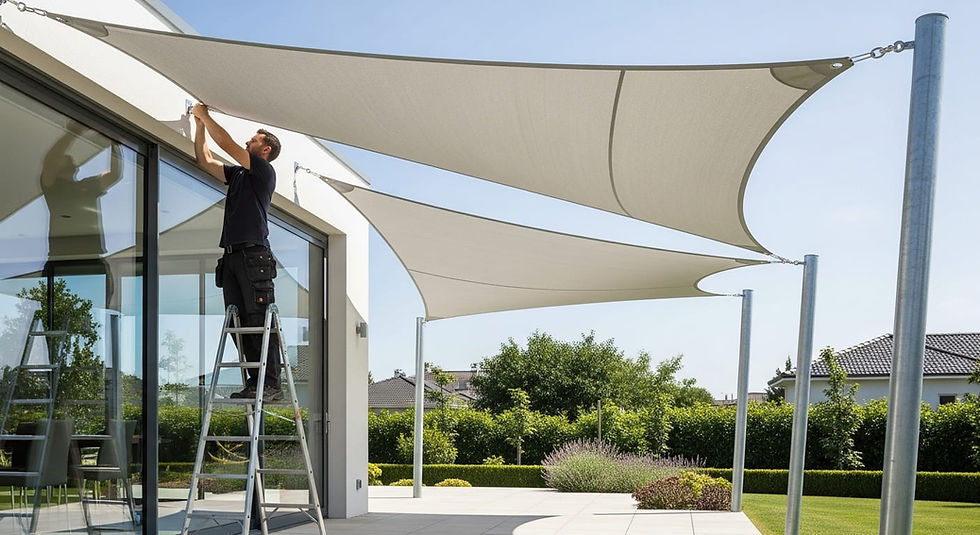Easy Installation Tips For Evaporative Cooler
- ameliya lanne
- Jul 10, 2015
- 3 min read
You must have heard about “evaporative cooling”. Evaporative cooling is actually a very simple, cost effective and natural way to cool your home. The use of latest technology has eventually helped us to create an intelligent and user and environment friendly cooling systems which ultimately minimizes the electricity cost also. Basically these coolers work on the phenomena in which fan inside the cooling unit pulls the air from outside. The water is stored in a pan at the bottom of the cooler and each side is fixed with pads of water absorbing material. A pump lifts the water to the top of each side thus cooling the house effectively. The performance of these coolers is best when the level of outside humidity is low.
How to Install Evaporative cooler? There are basically two ways to install evaporative coolers:
First is to install the cooler in the centralized location.
Second is to connect the cooler to the ducts distributing air to different rooms. The former installation works best in case of small houses and the later one is best for a big house with many rooms.
Instruction steps:
Support assembly Installation: This is the first and the basic step while installing your cooling system. Usually the manufacturer gives support assembly along with the evaporative cooler. Fix the support assembly at the appropriate place. Project the window towards outside in order to get the unit properly placed.
Positioning of cooler on Assembly: After the installation of support assembly, next step is to set the cooler. Rest the cooler on the support assembly supporting the unit to the maximum extent. Make sure to attach the brackets and wall hangers to the unit.
Run the water line: Now is the time to connect the water line to the cooler. Also ensure that the cut off valve is installed between the cooler and the water. Cut off valve is vital as it helps in draining the water out of the unit thus saving the whole system from getting damaged.
Air Vent Installation: Next step is to attach the air vent cover that comes with the kit. It brings the cool air into your home thus making your home cool and comfortable.
More Tips to keep in mind:
Use Low voltage thermostats instead of high voltage thermostats because high voltage thermostats allow large temperature swings which is not good for the cooler.
Check the float valve setting after one pump cycle.
Rooftop installations should have water cut off facility in order to avoid leakage and wastage of water.
To maintain personal safety, electrical disconnect should be available near the cooler. This becomes all the more important in case of roof top installations. These days cooler units come with an in-built electrical disconnect.
Don’t forget to use a barometric damper at the fan discharge of the evaporative cooler. These dampers make it much easier to switch between heating/air condition and evaporative cooling.
Minimum 3 ft. of area on the sides of the cooler should be kept clear for easy maintenance. It helps in repairing electrical parts in a hassle free manner.
Make sure that the cooler inlet is 10 ft away from gas flues, kitchen, kid’s room and bathroom.
If you have both the evaporative cooler and the central air unit, then never operate them at the same time. In that case, neither will work properly. In fact, they will work against each other. It is of no use to keep two systems in the house but neither works efficiently. Systems producing loud noise, water leakage without cooling your home are not actually energy efficient. They just add on to your electricity bill. Awesome! Your new evaporative air cooler is finally installed. Just make sure that there are no leaks around the cooler and the window. If you wish to get a helpful information regarding installation tips for evaporative cooler. Please visit here and get more helpful information.



















Comments